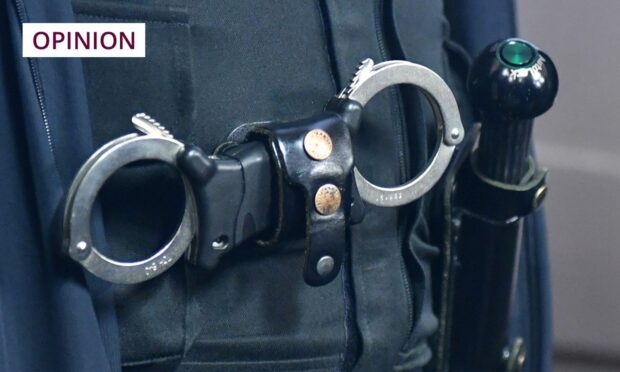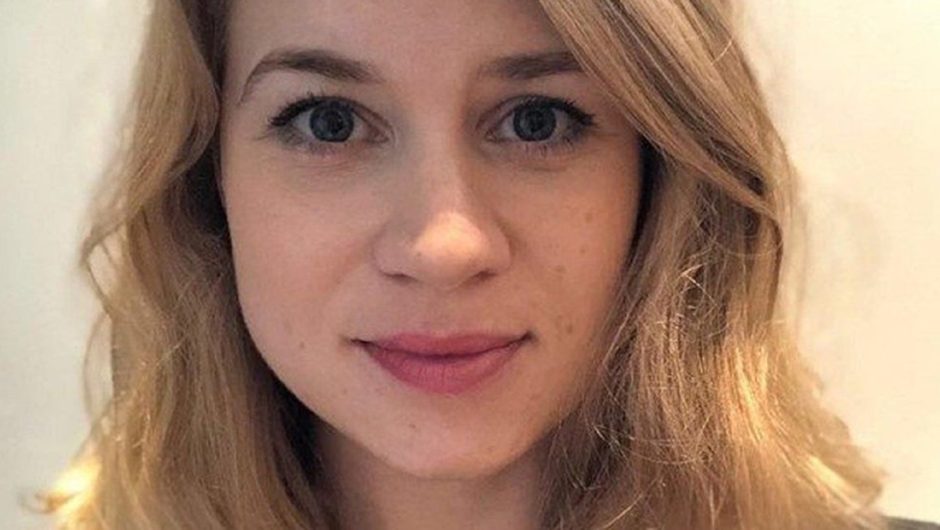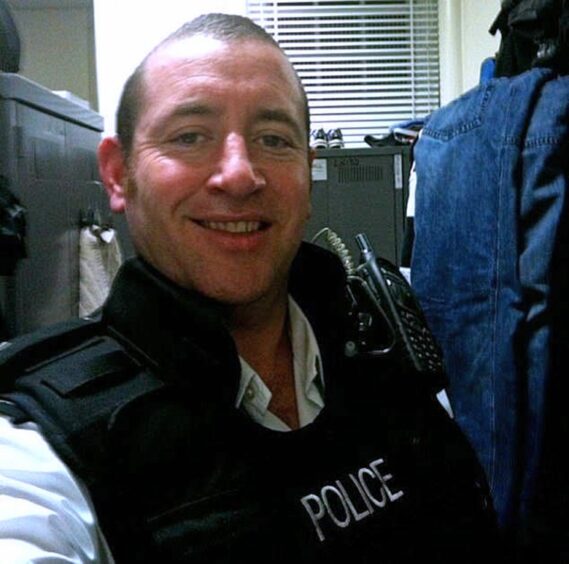“A man I don’t know just walked into my house and I’m here all alone.”
That was the refrain running through my mind the last time I had to deal with the police.
The man in question? A police officer. A nice one, luckily for me.
(That sentence alone is enough to sum up the problem, isn’t it?)
Let me set the scene – it was a Sunday night, I was in my pyjamas painting my nails, and I heard a knock at the door.
When I looked through my peephole and saw a lone police officer – a young man a little taller than me – I immediately panicked.
Who’s hurt? Who’s dead? What’s going on?

No one was hurt and no one was dead, except my car, which had been spectacularly totalled down the street.
The officer just needed to ask me some questions and get my insurance details. He was professional, kind and detached.
It was cold. I let him in. Fine.
It wasn’t until I was crouched on the floor surrounded by policy documents, brain-rotted from incessant jangling hold music, with the officer standing over me, that I started to panic again, this time for a much more solid reason.
A man I don’t know just walked into my house and I’m here all alone.
‘If a police officer attacks you, who do you call?’
If it sounds paranoid or over-cautious, you have the privilege of never having had a reason to feel unsafe in your own home, and I am jealous of you.
But police officers, by the nature of their job, often encounter people who don’t know they’re coming, and may feel vulnerable. That’s not something they can prevent.
So it would be really excellent if we knew, implicitly, that they could be trusted.
You’d think, since their job is to protect the public, that that would be a given.
The police are supposed to be beacons of integrity, safe harbours for people to gravitate towards when they are at their most vulnerable.
But the murk around the murders of Sarah Everard and the 15 other women killed by UK police officers in the last 13 years has hit headlines too many times for any of us to continue labouring under the delusion that a badge and a hi-vis makes someone any more trustworthy than anyone else.
And we’re left with an insidious lack of trust that goes beyond individual crimes.
Because if a police officer attacks you… who do you call then? Another one?
Carrick used position to ‘control and coerce’ rape victims
That was the exact dilemma that rapist David Carrick used to his advantage.
This week, serial abuser Carrick admitting to committing dozens of assaults, including 20 rapes, against 12 women while working his way up the ranks of the Metropolitan police force.
He used his position to “control and coerce” his victims, according to the Met.
And the most sickening part of this story is that it could have been prevented.
Carrick had already been accused of two offences by his former partner the year before he entered the police force.
He was brought to the attention of the police nine times – including for rape allegations – between 2000 and 2021.
Still, he sailed through so-called ‘vetting’ procedures, ended up being allowed to carry a gun, and remained in a position of power over citizens for years.
The campaign of intimidation that he used to silence his victims was directly enabled by his position.
And so 12 of those citizens paid the consequence because one evil man “slipped through the cracks” of a thoroughly broken system.
Forgive me if I don’t believe this is the story of one bad apple.
Vows to do better are not enough anymore
Now that he’s been found out, there are vows of reform – just like there were from the Met when the country grieved Sarah Everard.
(To no woman’s surprise, no effort was made to reinvestigate Carrick at that point, despite rape accusations having been made against him.)
The Home Office has asked forces in England, Wales and Northern Ireland to check their existing staff against national databases.
Meanwhile, devolved Police Scotland has not even committed to such bare-minimum measures, saying it already reviewed all cases where staff faced sexual allegations in October 2021 and found “no significant issues”.
Magic, we’re sorted then. It’s not like the Scottish police force has no history of corruption and cover-up culture or anything.
Oh wait…
It’s clear to me, as it seems to be for former senior Tayside officer Angela Wilson, that an external, third-party review of Police Scotland’s vetting procedures is the only acceptable next step if law enforcement is to even begin to regain the public’s trust.
Too many lives have been lost, too much trauma inflicted, and too much embedded corruption allowed to continue unchecked for far too long.
At this point, the entire institution is on trial – and it’s a case of guilty until proven innocent.
Police Scotland has asked The Courier to add the following statement to this article.
Deputy Chief Constable Fiona Taylor QPM said: “Officers and staff work day in, day out, right across Scotland to protect the vulnerable and keep people safe.
“We are resolute in our determination to address sexism, misogyny and violence against women, within our organisation and across society.
“Police Scotland has already strengthened vetting measures, introducing an additional check for new recruits just before they are sworn into office and we will commence a rolling programme to review vetting decisions this year.
“We have recently invested in our vetting team and take relevant action where concerns emerge.
“To further enhance our ability to safeguard our values and standards, all officers and staff will be checked against national systems, in line with work being taken forward in England and Wales.
“It is right policing is held to high standards. We will always support officers and staff acting with our values and standards at heart.
“Those who reject what we stand for don’t belong in Police Scotland.”














Conversation